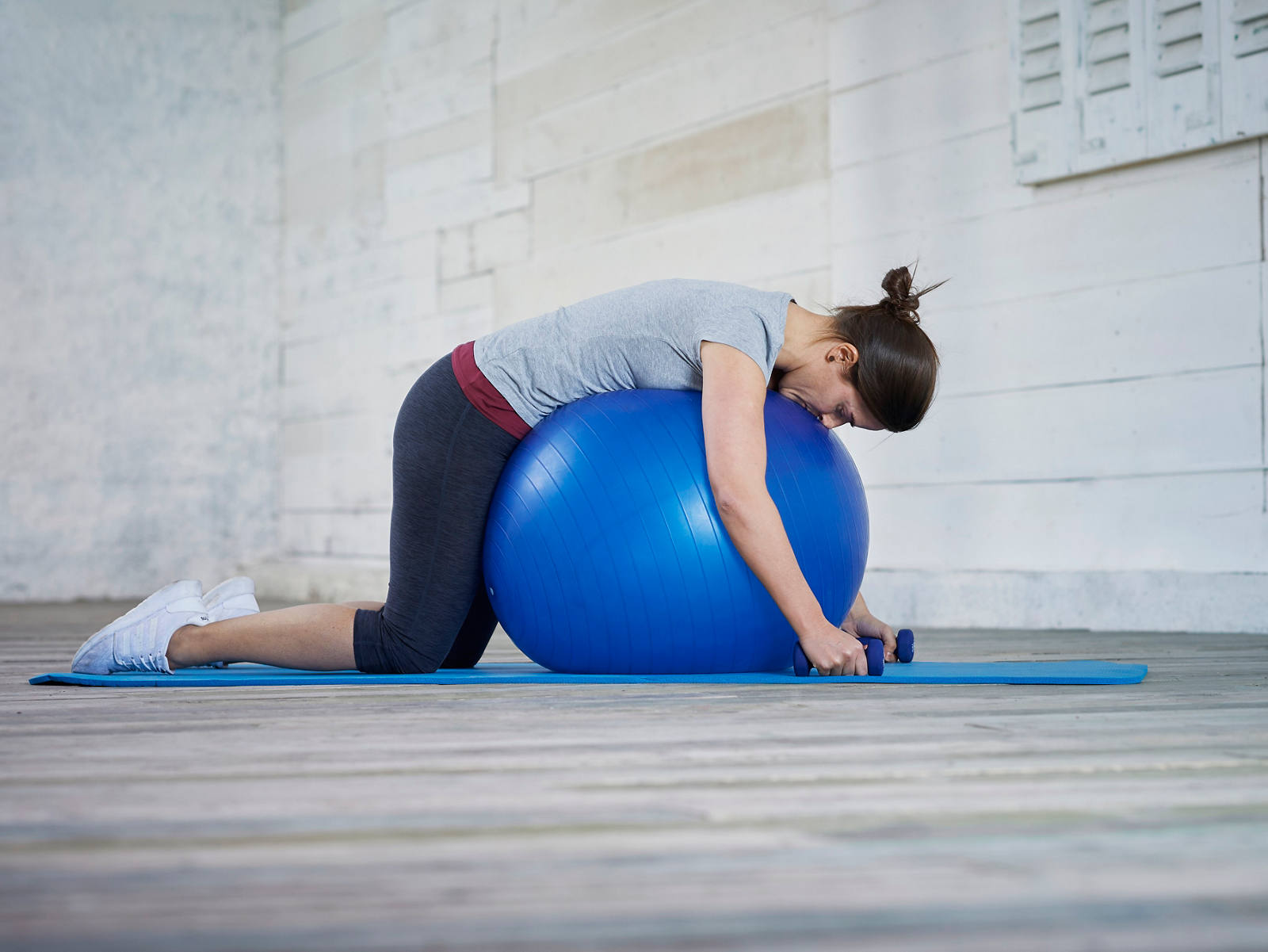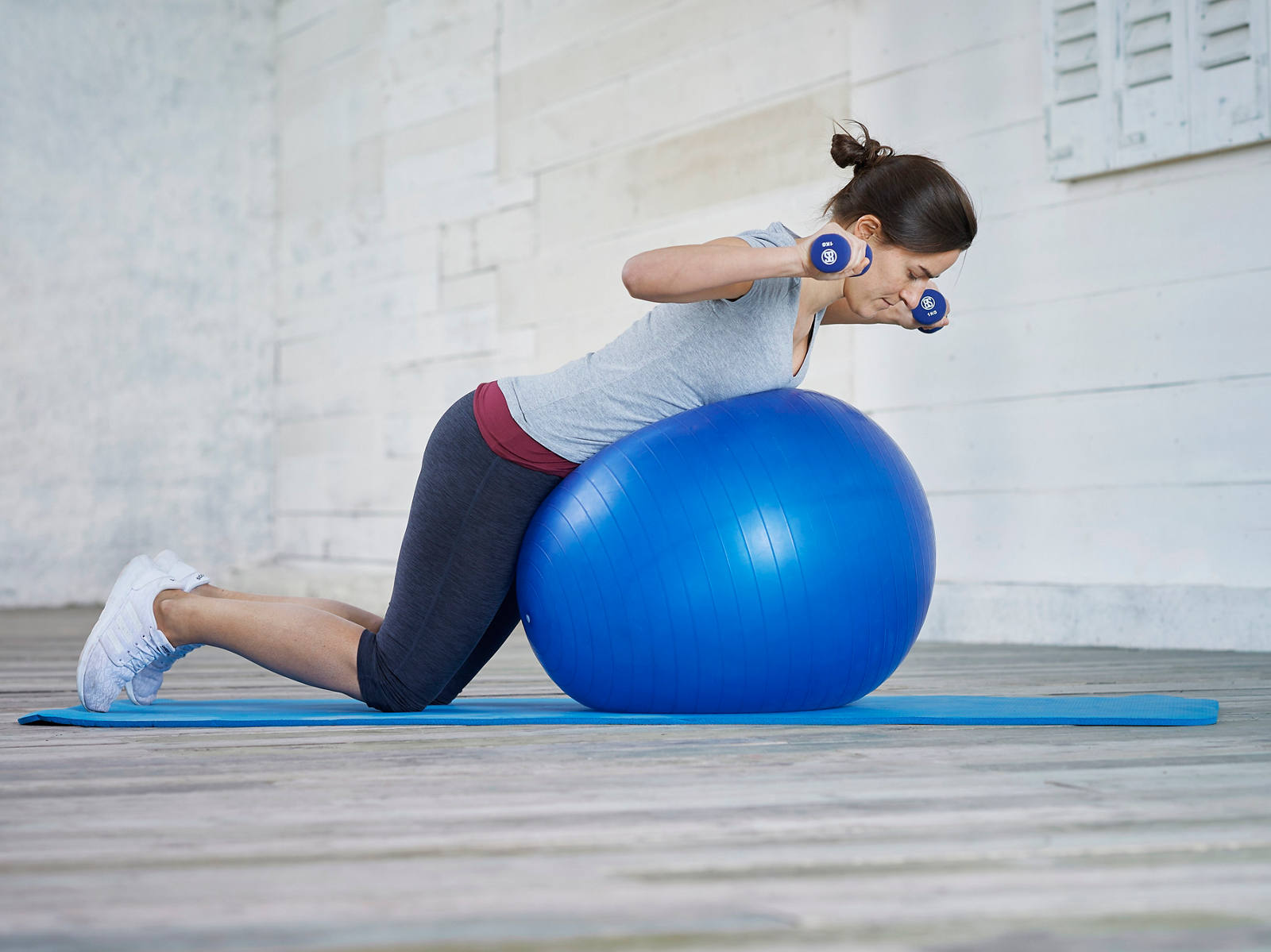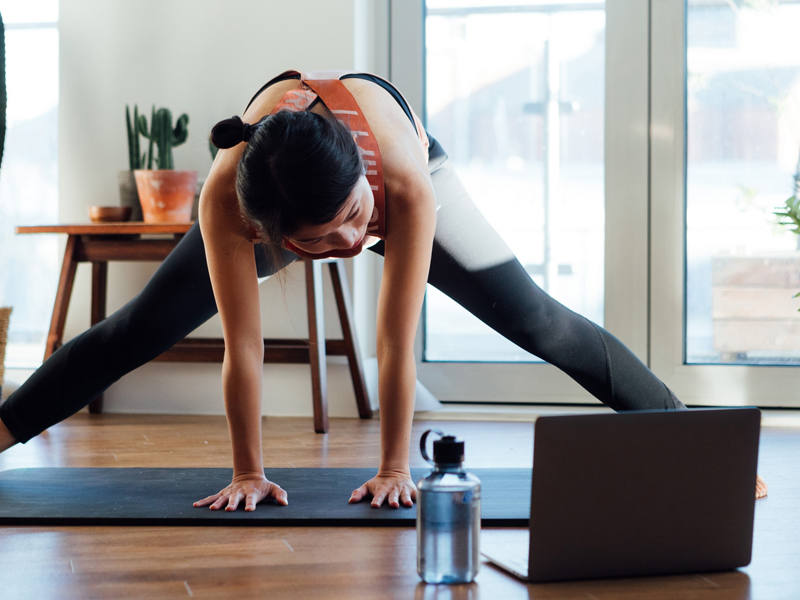Neck exercises: how to prevent neck pain

Neck pain is widespread. This is due to lack of exercise and poor posture. But it doesn't have to be that way – with simple everyday neck exercises, you can prevent neck pain and tension.
Avoid neck pain with exercises
Exercises for the neck help prevent the onset of incorrect postures such as cervical syndrome, relieve neck pain and strengthen our neck muscles – which tend to get neglected in our day-to-day lives. Add stretching movements and neck massages to your practice and you can prevent or ease long-term tension. The following exercises will help bring your neck muscles back into shape.
Exercise 1: Improving flexibility
Although the following exercise doesn’t strengthen the muscles, it mobilises them and improves the blood supply. And it’s easily integrated into your daily routine. It’s worth remembering that the more you exercise, the better. And: always mobilise the head slowly and with control.
- Side bend: bend the head to the side, keeping your gaze ahead.
- Rotation: alternately rotate the head to the left and right, allowing your gaze to follow.
- Nodding: alternately pull the chin down towards the chest and look up again.
Exercise 2: Training the deep neck flexors
Studies show that people with neck pain have weaker activity levels of the deep neck flexors. This is probably because they’re not used enough – which the following exercise can change.
Starting position

- Lean against a wall (or lie on your back) with your shoulders low, jaw relaxed, the back of your head lightly touching the wall. For support, place a small, padded roll between your cervical spine and the wall.
- Press the back of the head slightly against the wall and make a small nodding movement. Slide against the wall as if a thread is pulling the head upwards.
- 10x, holding for a few seconds. Intensity: flex only slightly.
Practise regularly: the exercise is easy to incorporate into your daily routine. And you can perform it in the car, for example, if the head support is correctly adjusted to head height.
Exercise 3: Lowered shoulders for proud posture
This simple exercise encourages better body posture. Pull your shoulder blades down and at the same time lift your head towards the ceiling by stretching your neck. You can make the exercise more difficult by pushing your hands down against a form of resistance.
Exercise 4: Improving proprioception
People with muscle tension and pain in the neck and shoulder area often have limited spatial orientation and head-eye coordination. Added to this, many with the condition are restricted in their movements or their movements are too jerky. In order to train the smallest muscles in the cervical spine, proprioceptive exercises can help.
Proprioceptive training for better body awareness
Proprioception training enables the body to better identify and control its position and movements within a space. This leads to better body awareness and helps prevent falls. Method: attach a laser pointer to your forehead and use it to follow different patterns that you’ve previously drawn on paper. Balance can also be trained at home with other exercises and without the need for special equipment.
Exercise 5: Stabilising the cervical spine
If you stand on an unstable surface, such as a rolled-up gym mat, and at the same time alternately raise each arm forward, this will reactively stabilise not only your balance, but your cervical spine too. It will also help protect it from any external impacts. Important: lift your head towards the ceiling during this exercise too. You can make the exercise more difficult by holding weights.
Exercise 6: Straightening the upper body
A strong cervical spine requires an upright posture along the whole length of the spine. If the thoracic spine leans too far forward, for example, the cervical spine will also become tense, which is why the back extensors and rhomboids need to be activated. For the exercise you need an exercise ball and two dumbbells.
Exercise for a strong spine
|
Home remedies to ease neck tension
Neck tension in particular is a widespread problem and cause many people a lot of discomfort. If the pain persists for a long time, consult a doctor to clarify the causes. For short term relief, home remedies can help.





